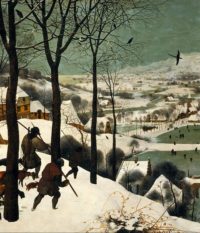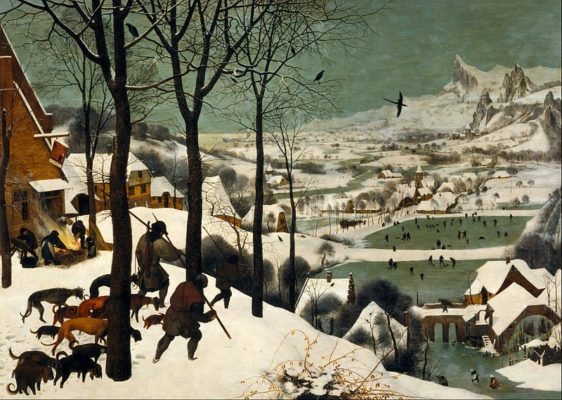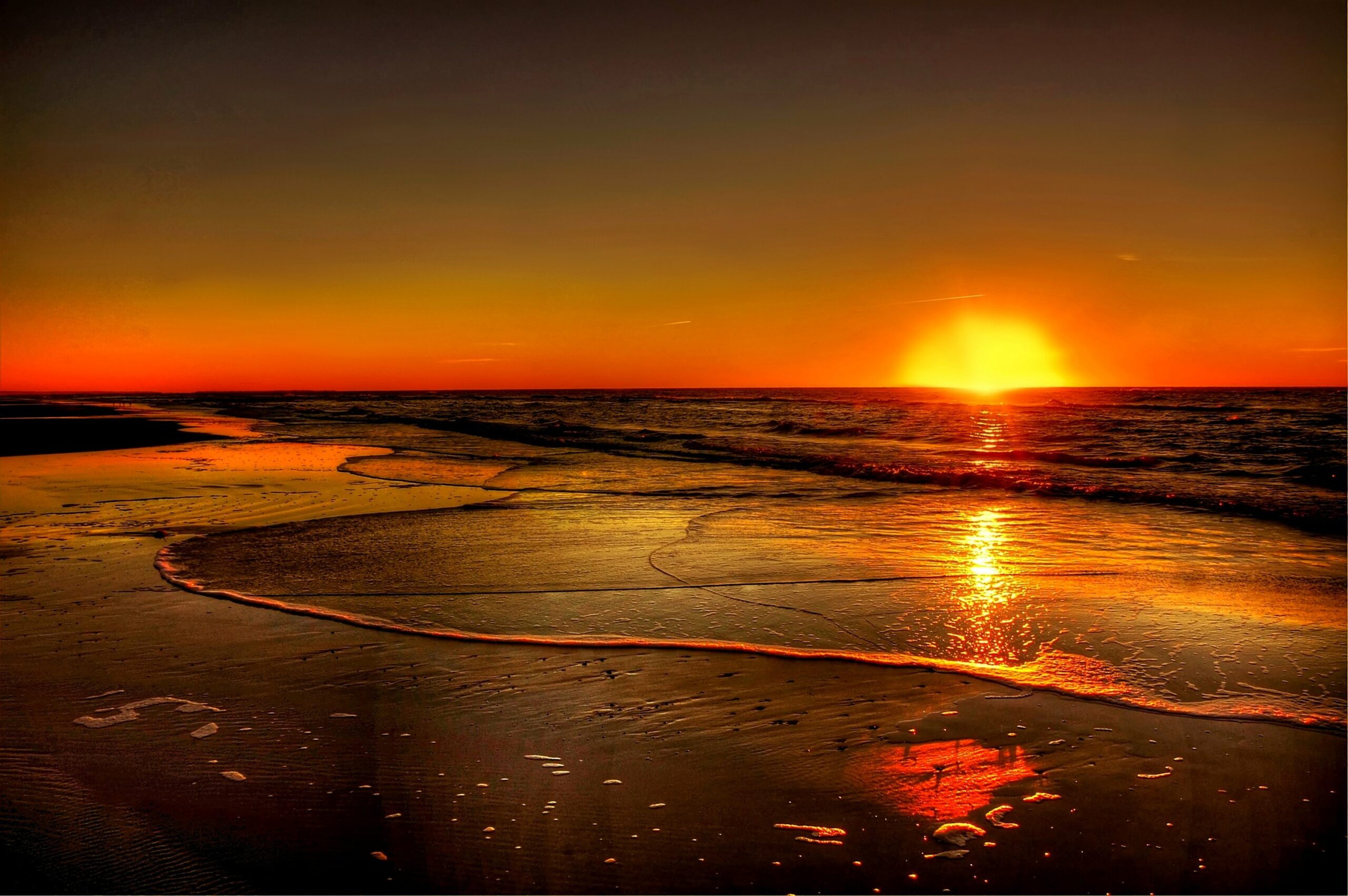In this lesson from T&W teaching artist Amina Henry, students explore the relationship between visual art and poetry. Using the poetry of William Carlos Williams as a model, students explore imagery and use it as a starting point to write their own poems about art.
Lesson Overview
Grade(s) taught: 3rd, 4th, and 5th
Genre(s) taught: Poetry, creative nonfiction
Download: The Art Poem
Common Core State Standards: (Refer to the Anchor Standards for Language)
- ELA-LITERACY-CCRA.L.3 Apply knowledge of language to understand how language functions in different contexts, to make effective choices for meaning or style, and to comprehend more fully when reading or listening.
- ELA-LITERACY-CCRA.L.4 Determine or clarify the meaning of unknown and multiple-meaning words and phrases by using context clues, analyzing meaningful word parts, and consulting general and specialized reference materials, as appropriate.
- ELA-LITERACY-CCRA.L.5 Demonstrate understanding of figurative language, word relationships, and nuances in word meanings.
Lesson Objectives:
Students will:

- Explore the relationship between visual art and creative writing
- Develop critical analysis skills by responding to art images and their ability to translate what they observe into impactful creative writing.
Guiding Questions:
- What is the relationship between art and poetry?
- How can art inspire us to write poetry?
LESSON
Ritual (5 minutes): Share quote about art and poetry.
“Painting is silent poetry, and poetry is painting that speaks.”
—Plutarch
Lead students in a brief discussion about the quote. What effect can both a painting and a poem have on their audience (e.g., recall a personal memory, feel as if they are in the scene itself, think about a particular subject)?
Warm-up (10 mins):
Pass out “The Hunter in the Snow” by William Carlos Williams, with the image of Brueghel’s painting “Hunter in the Snow” as a class. Discuss some of the images that stand out the most from the poem.
Split students into pairs and hand out selected images from the poem to each pairing. (You can cut out images from a magazine or print from the internet.) Students have 3 minutes to create a tableau (frozen scene) of the image. (Examples: Icy mountains, antlers in the cold, the hill a pattern of skaters, huge bonfire, women who cluster, a winter-struck bush.)
The teacher moves around the room, having each student physicalize the image.
The students read the whole poem again. Note that they’ve already engaged in a close reading activity to familiarize themselves with the language from the text.
The Hunter in the Snow
By William Carlos WilliamsThe over-all picture is winter
icy mountains
in the background the returnfrom the hunt it is toward evening
from the left
sturdy hunters lead intheir pack the inn-sign
hanging from a
broken hinge is a stag a crucifixbetween his antlers the cold
inn yard is
deserted but for a huge bonfirethat flares wind-driven tended by
women who cluster
about it to the right beyondthe hill is a pattern of skaters
Brueghel the painter
concerned with it all has chosena winter-struck bush for his
foreground to
complete the picture
Introduction (10-15 minutes):
Ask Students:
- What words or phrases stick out to you in the poem?
- What are the strongest images?
- What is the most interesting part of the poem for you?
- What do you think William Carlos Williams’ point of view, or opinion, is about the hunters in the snow?
- What is the tone of the poem? Is it a happy poem, a sad poem, or something else?
Now flip over your paper and look at Brueghel’s “Hunter in the Snow”:
- Circle any words in the poem that best describe the strongest images.
- Look for any adjectives that describe the main characters, whether human or animal.
- Look for something in the painting that the poem did not see. Have each pair of students take five minutes to write out one phrase, line, or group of words that evokes something as yet unseen by the poem.
Main activity (20-25 mins):
- Students will gather into small groups of three or four and write poems in which they describe what they see in a work of art.
- Distribute reproductions of paintings. For my class, I brought in “Peasants” by Diego Rivera, “Rehearsal of the Scene” by Edgar Degas, “The Gleize Bridge over the Vigueirat Canal” by Vincent Van Gogh. Miro and Walter Keane paintings are also great options.
- Tell students that they can pick their favorite of the distributed images. Once each student has chosen a painting to describe, tell them to look at it for a full minute.
- Describe the chosen painting in a poem. What do you see? What colors are in the painting? What feelings are in the painting? If you were standing inside the painting, what might you hear or smell? If you touched something in the painting, what textures might you feel? What main idea is being conveyed in the painting? What is the story of the painting? The poems need to have at least 3 strong images.
- Give students 10 minutes to write their poems.
Closing (5-10 mins):
- Have several students share their poems and give brief feedback.
- What do the students discover listening to each other’s poems about the painting?
Materials:
William Carlos Williams and Brueghel handout, images of paintings
Vocabulary:
Description, sensory detail, imagery, tone
Multi-Modal Approaches to Learning:
Linguistic, Spatial, Intrapersonal, Interpersonal, Bodily-Kinesthetic, Existential
Amina Henry is a Brooklyn-based playwright and educator. Recent local productions include PS (Ars Nova), Little Rapes (The New Group/Long Island University), and The Johnsons (JACK). Her work has been produced, developed by, and/or presented by: Atlantic Theatre, The New Group, Clubbed Thumb, New Georges, The Flea, Page 73, Project Y Theatre, National Black Theater, Little Theater at Dixon Place, The Brooklyn Generator, The Brick, HERE Arts Center, The Cell: a 21st Century Salon, the Oregon Shakespeare Festival in the 2013 Black Swan Lab Series (Ashland, OR), Kitchen Dog Theater (Dallas, TX), and HERO Theatre (Los Angeles, CA), among other organizations. She was a 2017-18 recipient of the Lower Manhattan Cultural Council Space Residency and is a 2018 recipient of a space residency at Dixon Place. She is a member of the Women's Project 2022-24 Lab and an affiliate artist at New Georges. She is currently an adjunct lecturer at Brooklyn College and SUNY Albany. She is also a teaching artist for Teachers & Writers Collaborative and the Hunts Point Alliance for Children.




